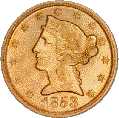Probability > Experimental Probability / Empirical Probability
Empirical research, from where we get empirical probabilities, is where you conduct “hands on” experimentation. In other words, you get your results from actual experience rather than from a theory or belief.
What is Empirical Probability?
 Empirical probability, also called experimental probability, is the probability your experiment will give you a certain result. For example, you could toss a coin 100 times to see how many heads you get, or you could perform a taste test to see if 100 people preferred cola A or cola B. You could use this information to make an educated guess (a statistic) about what your probabilities would be if you performed the experiments 1000, 10,000 or even an unlimited number of times. If you don’t actually perform the experiment—if you just theorize about it— then that’s called theoretical probability.
Empirical probability, also called experimental probability, is the probability your experiment will give you a certain result. For example, you could toss a coin 100 times to see how many heads you get, or you could perform a taste test to see if 100 people preferred cola A or cola B. You could use this information to make an educated guess (a statistic) about what your probabilities would be if you performed the experiments 1000, 10,000 or even an unlimited number of times. If you don’t actually perform the experiment—if you just theorize about it— then that’s called theoretical probability.
Empirical probability formula
Experimental probability formula:
Number of ways the thing occurs / number of ways the thing could possibly occur.
For example, let’s say you wanted to know the probability a person prefers cola A over cola B. Your taste test of 100 people reveals that 75 people prefer cola A. Your probability is:
Number of ways the thing occurs (75) / number of ways the thing could possibly occur (100) = 75/100 = 3/4 or 75%.
As a mathematical formula, empirical probability is denoted with prime notation (Thompson, 2005):
P′(A) = n(A) / n
Where:
- n(A) is the number of times event A happens,
- n is the number of attempts at the experiment.
Experimental vs Empirical vs Relative Frequency
Experimental probability or empirical probability is also sometimes called “relative frequency,” but you’ll usually find the term reserved for applications like the Relative Frequency Table. It’s probably more accurate to say that experimental probability is the experimental process of figuring out probabilities (including the results), while relative frequency refers to the results only. To add to the confusion, you might also see experimental probability called “a posteriori” or “frequentist“, but these terms aren’t used very often.
Other Types of Probability
There are two other types of probability (other than experimental probability/empirical probability and theoretical probability). They are:
- Subjective Probability is your belief that a particular event will occur. There’s no science behind this. It could be the feeling that “this scratch off ticket will be a winner” or your hunch that a certain cold medicine is better than another one. Subjective probability can get extremely confusing when one person’s probability differs from others. For example, you might have a feeling that it’s going to be sunny out today, while another person thinks it’s going to rain.
- Axiomatic probability is a unifying probability theory. It sets down a set of rules that apply to all of the above types of probability. For example, one axiomatic probability rule is that probabilities are always between zero and 100 percent (i.e. from 0 to 1).
Reference
Thompson (2005). Chapter 4: Probability.
What is Probability? University of Texas.